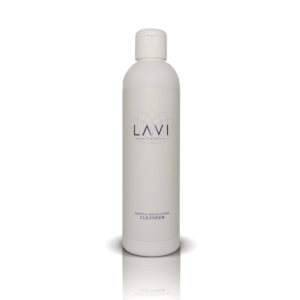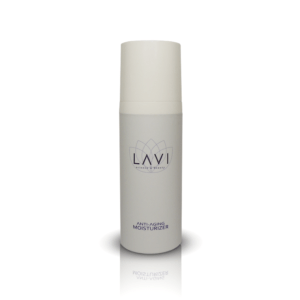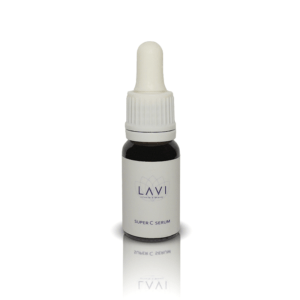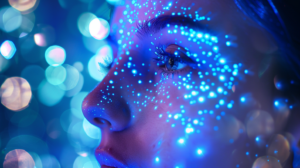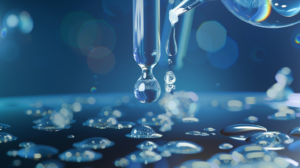Blog
Table of Contents
Best Ingredients in Skin Care
Which ingredients should I have in my skin care routine? Which ones should I add to my skin care routine?
We all desire the best for ourselves, and our skin included. We’re bombarded with ads and information (some of it contradicting) on an daily basis. How can we understand and choose the best ingredients for our unique skin?
First, let’s talk about what skin is.
The skin is the largest organ in the body. it’s about 12%-15% of our body weight, on average we have about 300 million skin cells and 11 miles of blood vessels.
The main purpose of the skin is protection against different types of bacteria, viruses, chemicals, harmful UV light and temperature 1.
The skin consists primarily of three layers: hypodermis (bottom), Dermis (middle), and Epidermis (top). Each one serves a different purpose.
The Hypodermis (or subcutaneous) layer contains hair follicles, sensory neurons (nerve cells), blood vessels, and fat tissue as an insulator from heat or cold and as protection from injuries and excessive pressure. OTC skin care products cannot reach the hypodermal layer.
The Dermis layer contains hair follicles, dense connective tissue and collagen fibers, sensory neurons, sweat glands, and blood vessels.
The Epidermis is made out of 5 layers. it’s our main line of defense, it regulates water release, and contains 4 types of skin cells. These cells are responsible for four important roles.
֍ Formation of a water barrier which secretes lipids (fats/oils) that are hydrophobic (water-repellant), preventing water and other liquids from penetrating the skin.
֍ Production of melanin to regulate Vitamin D synthesis from UVB light and serve as a natural sunscreen.
֍ Transfer of sensory data of touch (that’s why we can feel even a slightest breeze of wind on our skin)
֍ Fight different pathogens such as bacteria, viruses, fungi and foreign particles.
Each one of these layers communicate and work symbiotically with the other to form our skin and keep us safe (from pathogens or excess UV light), warm or cold, produce hormones (such as vitamin D), and release water and oils to the environment 2.
How do active ingredients affect the skin?
Our skin is constantly dealing with pathogens and chemicals, shedding skin cells and rebuilding itself. As we age that process slows down. After the age of 20, it decreases by 1.4% every year. Our skin reacts to everything it comes in contact with, harmful and beneficial materials alike.
Active ingredients like peptides – encourage our skin’s natural mechanism to produce collagen and elastin fibers, these proteins keep our skin plump, firm, elastic and wrinkle free.
Vitamins and antioxidants – help fight oxidation and free radicals which create oxidative stress and destroy our skin. Vitamins also contribute to the skin’s regeneration process.
Certain acids like AHA and BHA exfoliate dead skin cell leaving a fresh layer of skin and increase the renewal rate of new skin cells.
Moisturizers help keep water inside the skin. Water maintains healthy dermal functions, help with wound healing and wrinkle repair, and affects the overall appearance of the skin.
Peptides
You might’ve heard about the wonders of Collagen – It keeps our skin firm and plump, preventing and improving the appearance of wrinkle. It’s no surprise that it’s one of the most Googled terms in the last 10 years regarding skin care.
Elastin is often overlooked, and as the name suggests, it’s what makes skin elastic – the rubber in our skin, joints, blood vessels and lungs. It’s a protein which provides flexibility. Elastin is interwind with collagen and together they give our skin the ability to stretch, remain intact and return to its original structure 3.
Peptides, specially matrikines which are cell-signalling extracellular matrix fragments, can penetrate through the first layer of the epidermis, the stratum corneum, due to their small particle size.
One multiple peptide formula – Matrixyl® (or the improved version Matrixyl®3000) was shown to significantly improve the appearance of wrinkles and fine lines and contribute to overall skin rejuvenation by increasing collagen and elastin synthesis 4,5,6,7.
Another peptide formula Argiraline® – Has shown significant improvement in wrinkles and skin hydration 8, and to have the same anti wrinkle properties as Botox, without the need for injections and the risk of toxicity 9,10.
Vitamins & Antioxidants
Oxidation makes us age. Not just us, any substance, living, natural, processed or synthetic, is affected by oxidation. We have defense mechanisms against oxidation, unfortunately, as we grow older these mechanisms slow down.
Oxidation is a process which a healthy molecule is losing an electron to another, stealing molecule, the free radical. In the skin this process is causing damage to DNA, collagen breakdown, inflammation, and restricted blood flow 11. The results are wrinkles, loose skin, hyper pigmentation, uneven tone, acne and breakouts, etc. 12.
Luckily, nature always has a trick up its sleeve and gives us some helpful, electron giving, compounds to fight oxidation, and these are vitamins and antioxidants. The more the better, high concentration of antioxidants will often yield good results.
Vitamin C is the most famous of them all, and justifiably so. It’s a free radical scavenger, mitigates UV light damage, improves wrinkles and hyper pigmentation, evens tone and even more potent in its VC-IP (Ascorbyl Tetraisopalmitate) form 13,14. It can penetrate the stratum corneum, and even faster in high concentrations 15.
Vitamin E works synergistically with vitamin C and are a winning combination. It increases collagen and elastin synthesis, fights free radicals, increases moisture, improves hyper-pigmentation, and repairs damaged DNA 16.
Vitamin B3 (niacinamide) is another powerful antioxidant. It repairs DNA, increases collagen production, balances cells membranes, lowers oxidative stress, and fights free radical and lowers oxidation 17.
Vitamin A and its derivatives such as retinol and retinoids help renew the epidermal layer, increase collagen and elastin production, and lower oxidation. All retinol esters must be converted by skin to retinol and converted again to retinoid acid.
Retinol and its esters are very sensitive to light and increase the skin’s photosensitivity, this makes them more recommended for night use. Because Retinol and retinol esters were found to cause redness and irritation in some instances, we recommend Retinyl Palmitate. It’s one retinol ester that is considered gentle and safe and as effective as retinol 18.
Acids
The epidermis (top layer of the skin) is acidic, it varies between 4 to 7 pH (lower pH means more acidic where 7 is neutral). More acidic equals better skin bacterial flora, which results in less susceptibility to bacterial and fungal overgrowth, better barrier function, and less scaliness 19,20.
The use of acids have grown over the past few years, Hyaluronic acid is gaining popularity and is the latest “big name” in skin care ingredients, followed by Alpha-Hydroxy Acids (AHA) and Beta-Hydroxy acids (BHA).
Hyaluronic acid is a tiny molecule found naturally in tissues all throughout the body and has two major functions:
1. On the skin’s surface it serves as humectant (pulling water from the dermis upwards into the epidermis), acting as a moisturizer and reducing UV damage 21.
2. Below the skin’s surface it’s regulating many vital functions such as collagen/elastin synthesis, forming new blood vessels 22 and regulating inflammatory response in the lymphatic system 23.
Hyaluronic acid exhibit remarkable anti-wrinkle, anti-nasolabial fold, anti-aging, space-filling, and face rejuvenating properties 24.
Alpha-Hydroxy Acids (AHA) are more often used in cleansers and exfoliation products. These acids increase cellular renewal by causing mild peeling of skin cells in the stratum corneum (upper dermis layer). AHA include Glycolic acid (GA), Citric acid (CA), Malic acid (MA), Tartaric acid (TA), and Lactic acid (LA). All are naturally occurring organic acids found in many foods, milk sugars and synthesized naturally in the body for different functions.
When applied topically Glycolic and Lactic acids were found to increase type I collagen fibers in the upper dermis and decrease melanin pigments 25. Glycolic acid was also shown to improve hyaluronic acid content and type I collagen mRNA in dermal and epidermal layers 26. Due to increased photosensitivity effect of AHA it is recommended to use AHA at night or to use sunscreen.
Beta-Hydroxy acids (BHA) mainly salicylic acid, are very similar to AHAs except for their solubility. They are lipid-soluble instead of water-soluble as AHAs. This structure allows them to penetrate into the skin through sebaceous follicles, making them effective for oily skin and open comedones. They’re very anti-inflammatory and also less susceptible to cause irritancy and redness than AHA due to their gentle exfoliation mechanism 27.
Moisturizers
Moisturizers have 3 functions. Preventing water loss through the skin, adding water to the skin, and reducing visible flakes. With the advancement of science, we can now comprehend the mechanisms of these functions and their effects on the skin.
Water is important for healthy skin functions, wrinkle repair, and affects the overall appearance and glow of our skin.
There are four groups of moisturizing agents, and each one serves a different purpose.
Emollients form broad laminated intercellular sheets, which act as barriers to our environment 28. By doing this they improve the skin’s barrier function which results in more water, causing better eicosanoid production (immune response molecules), membrane fluidity, and cell signaling.
֍ Squalane – Squalane is an emollient and it’s the latest word in the skin care industry and for a good reason. It’s very stable and not subject to oxidation. Squalane is odorless and doesn’t have an oily feel, it’s antibacterial and mostly safe for sensitive skin. It’s one of the most abundant lipids produced by skin cells, about 60% of dietary squalene is absorbed, and can come from animal and plant sources.
֍ Allantoin – An emollient compound which is antibacterial, and anti-inflammatory, mainly used for wound healing for its antioxidant and cell regeneration properties 29.
It aids in the production of cholesterol which is found in every tissue in the body, mainly in skin cells, yet the body produces it mostly on its own. It also helps fighting UV radiation damage by breaking down singlet oxygen molecules in the skin. Unfortunately, after the age of thirty production goes down significantly, resulting in dryer skin.
Examples of most commonly used emollients – Cholesterol, squalene, cyclomethicone, fatty acids, fatty alcohols such as octyldodecanol and seudoceramides.
Humectants act as magnets for water. They pull water from the dermis into the epidermis. Some humectants also act as barriers and have emollient properties.
Examples of good humectants include: Glycerol (or Glycerin), Saccharide isomerate (PENTAVITIN®), Urea, Gelatin, Panthenol, Sorbitol, Propylene glycol and butylene glycol, Sodium pyrrolidine carboxylic acid, Aluminum lactate and Sodium lactate, Sorbitol, and Honey. Alpha Hydroxyl Acids (AHA), and Hyaluronic Acid also work as wonderful humectants.
Since humectants draw water from the dermis into the epidermis, that water can easily evaporate in dry and semi-dry weather conditions. For that reason most humectants are commonly combined with occlusives.
Occlusives block loss of hydration in the most upper layer of the skin. They create a hydrophobic (water-repellent) barrier over the skin, contribute to the matrix between corneocytes (skin cells at the outmost layer of the skin) and have the most pronounced effect when applied to the slightly dampened skin 30.
Examples of occlusives include:
֍ Hydrocarbons – Petrolatum, Paraffin, Mineral oil, Caprylic / Capric triglyceride, Squalene (precursor to Squalane)
֍ Fatty acids – Lanolin acid, Stearic acid
֍ Fatty Alcohols – Cetyl alcohol, Stearyl alcohol, Lanolin
֍ Polyhydric alcohols – Propylene glycol
֍ Sterols – Cholesterol
֍ Vegetable waxes – Carnauba, Candelilla
֍ Wax esters – Beeswax, Lanolin, Stearyl stearate
Some ingredients can have 2 ore more moisturizing properties such as fatty acids which function as emollients and occlusives.
Protein rejuvenators – These are all the hyped names like Collagen, Elastin and Keratin. All 3 are important proteins which are made from amino acids. Some are considered “essential” and cannot be synthesized by our bodies and some are non-essential and can be synthesized.
They help rejuvenate the skin, improve water retention, improve the appearance of wrinkles, fine lines and scars, treat damage cause by UV radiation, and replenish amino acids necessary for skin cell function. Unfortunately, they are too big and have to be broken down into peptides in order to penetrate the stratum corneum (the uppermost layer of the skin) in order to be absorbed 31.
In conclusion
We went over the main ingredients that our skin requires and each of their functions and benefits. For extra maintenance, protection and improvement – Serums and creams are great additions and are proven to be highly effective.
We recommend applying serums and creams that include peptides (Matrixyl®3000, Argireline®, REVITALIN® PF, Syn®-Ake, Gatuline® In-tense), vitamins and antioxidants (B3, B3, C, E, and A derivatives), and hyaluronic acid at night time, which is when our skin cells undergo renewal and oxidation minimizes.
Water is important for healthy skin function, wrinkle repair, and nourishes the overall appearance and glow of our skin. We highly recommend applying a moisturizer or a cream that contain all moisturizing agents – emollients, humectants, and occlusives at least once a day.
We recommend starting your routine with a cleanser that contains some AHA and BHA like glycolic, lactic and salicylic acids for effective exfoliation of dead skin cells and increasing the skin’s renewal rate.
Our scientifically formulated products are tested for maximum efficacy using high concentration of these powerful active ingredients. Here are 3 examples:
Gentle Exfoliating Cleanser
֍ Vitamin B3 ֍ Lactic Acid ֍ Glycolic acid ֍ Vitamin E ֍ Chamomile ֍ Hamamelis ֍
3 in 1 cleanser. Gentle exfoliation using Glycolic & Lactic acids while antioxidants (Vitamins B3, & E) provide regeneration, balance and protection. Chamomile, Hamamelis and Calendula for soothing and relaxation.
Anti Aging Moisturizer
֍ Hyaluronic acid ֍ Pentavitin® ֍ Wakame algae extract ֍ Vitamin E ֍ Revitalin®
Protection and production. Contains 3 emollients, 5 humectants and one occlusive. Hyaluronic acid, Wakame algae & REVITALIN® PF increase moisture and collagen production. Vitamin E as an antioxidant. Specially formulated for wrinkles and dry skin.
Super C Serum
Vitamin C (VC-IP) – 25% ֍ Vitamin E – 25% ֍
֍ Squalane ֍
A true antioxidant powerhouse. The most concentrated and effective form of Vitamin C with Vitamin E & Squalane for protection, collagen production and cell regeneration.
References
- https://medlineplus.gov/ency/imagepages/8912.htm ↩︎
- https://www.ncbi.nlm.nih.gov/books/NBK470464/ ↩︎
- https://www.ncbi.nlm.nih.gov/pmc/articles/PMC10046833/ ↩︎
- https://www.ncbi.nlm.nih.gov/pmc/articles/PMC5108505/ ↩︎
- https://pubmed.ncbi.nlm.nih.gov/18492182/ ↩︎
- https://www.ncbi.nlm.nih.gov/pmc/articles/PMC9301720/ ↩︎
- https://pubmed.ncbi.nlm.nih.gov/23320752/ ↩︎
- https://www.ncbi.nlm.nih.gov/pmc/articles/PMC7992733/ ↩︎
- https://pubmed.ncbi.nlm.nih.gov/18498523/ ↩︎
- https://pubmed.ncbi.nlm.nih.gov/33151254/ ↩︎
- https://www.ncbi.nlm.nih.gov/pmc/articles/PMC3101336/ ↩︎
- https://www.ncbi.nlm.nih.gov/pmc/articles/PMC5514578/ ↩︎
- https://pubmed.ncbi.nlm.nih.gov/16935471/ ↩︎
- https://pubmed.ncbi.nlm.nih.gov/34910367/ ↩︎
- https://pubmed.ncbi.nlm.nih.gov/27289538/ ↩︎
- https://www.ncbi.nlm.nih.gov/pmc/articles/PMC7827176/ ↩︎
- https://www.ncbi.nlm.nih.gov/pmc/articles/PMC6824628/ ↩︎
- https://www.ncbi.nlm.nih.gov/pmc/articles/PMC3977527/ ↩︎
- https://pubmed.ncbi.nlm.nih.gov/18489300/ ↩︎
- https://www.ncbi.nlm.nih.gov/pmc/articles/PMC7167948/ ↩︎
- https://www.ncbi.nlm.nih.gov/pmc/articles/PMC8322246/ ↩︎
- https://pubmed.ncbi.nlm.nih.gov/17055233/ ↩︎
- https://pubmed.ncbi.nlm.nih.gov/19594639/ ↩︎
- https://pubmed.ncbi.nlm.nih.gov/30287361/ ↩︎
- https://pubmed.ncbi.nlm.nih.gov/16469079/ ↩︎
- https://pubmed.ncbi.nlm.nih.gov/11359487/ ↩︎
- https://www.ncbi.nlm.nih.gov/pmc/articles/PMC3941867/ ↩︎
- https://www.e-ijd.org/article.asp?issn=0019-5154;year=2006;volume=51;issue=4;spage=297;epage=298;aulast=Rathi ↩︎
- https://www.ncbi.nlm.nih.gov/pmc/articles/PMC7310548/ ↩︎
- https://pubmed.ncbi.nlm.nih.gov/11059367/ ↩︎
- https://pubmed.ncbi.nlm.nih.gov/18412569/ ↩︎

